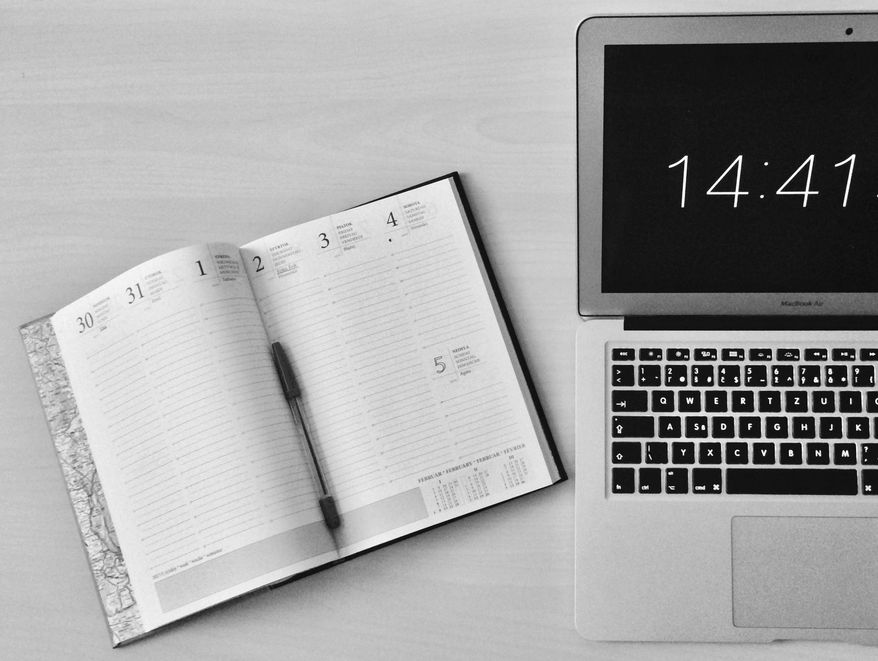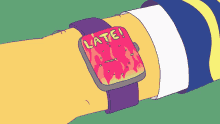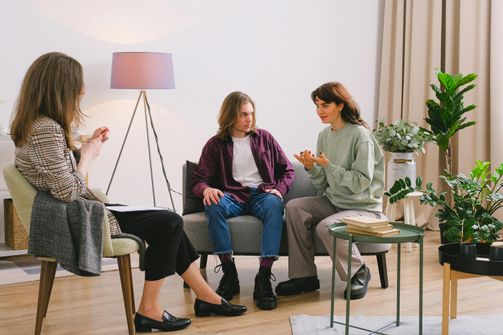
How Women with ADHD Can Manage Relationships: Effective Communication and Conflict Resolution
For women with ADHD, navigating relationships—whether romantic or platonic—can present unique challenges. ADHD symptoms like distraction, impulsivity,...

Managing time can be a challenge for anyone, but for women with ADHD, time management often feels like an insurmountable task. ADHD can make it difficult to stay focused, prioritize tasks, and avoid procrastination, leading to stress and frustration. But the good news is, there are practical tools and strategies that can help women with ADHD get things done effectively, without feeling overwhelmed.
Let’s explore some fun, practical, and evidence-based strategies for time management and procrastination reductionthat can make your day-to-day life a little smoother.

Procrastination is often fueled by feeling overwhelmed by a task that seems too big or complicated. For women with ADHD, starting a large project can feel impossible. The key to getting started is to break it down into smaller, more manageable steps.
Instead of trying to tackle a massive project, commit to working on it for just five minutes. Often, getting started is the hardest part, and once you begin, you’ll find it easier to continue. Even if you only work for five minutes, that’s still progress!
Example: If you need to clean the house, start with a small, specific task like organizing one drawer or cleaning one corner of the kitchen. You’ll feel accomplished, and it’s easier to continue once the task is started.
Time blocking is a great technique to give your day more structure. Women with ADHD often struggle with staying on task because their attention is pulled in different directions. Time blocking sets aside specific blocks of time for certain activities, helping to minimize distractions.
Try using a color-coded calendar to block out chunks of time for specific tasks, like work, household chores, or exercise. Seeing your day visually laid out can help you stay on task and remind you what you need to focus on next.
Research Insight: According to a study in Children (Basel), visual time management strategies, like time blocking, can improve productivity in adults with ADHD by helping them stay focused and reduce the temptation to multitask.
For women with ADHD, time blindness (the inability to sense how much time has passed) can make it difficult to keep track of tasks. This can lead to procrastination or spending too much time on one activity without realizing it.
Set a timer for each task to help you stay on track. You can use your phone’s alarm or apps like Forest or Focus Booster that encourage you to focus for a set period (such as 25 minutes of work followed by a short break). This technique, often called the Pomodoro Technique, helps prevent burnout and ensures you’re pacing yourself throughout the day.
Example: If you need to work on a project but keep getting distracted, set a timer for 25 minutes to focus on work. After 25 minutes, take a 5-minute break, then repeat.
To-do lists can be overwhelming for women with ADHD, especially when they’re filled with too many tasks. However, keeping a simple, focused to-do list can help you stay on track without feeling burdened.
Instead of writing down everything you need to do, focus on three priority tasks for the day. These are the most important things you need to accomplish. Once you’ve completed those, anything else is a bonus. This reduces the feeling of overwhelm and helps you stay focused on what matters most.
Example: If your to-do list has “grocery shopping,” “finish a report,” and “schedule a doctor’s appointment,” focus on those three things first before tackling any other smaller tasks.

There are countless apps and tools designed to help manage time and reduce procrastination—perfect for women with ADHD who thrive with visual or tech-driven systems.
Apps like Todoist, Trello, or Asana can help you organize tasks, set reminders, and visualize progress. These tools allow you to create categories for work, home, and personal goals while also giving you a clear overview of what’s left to do.
Research Insight: A study from National Center for Scientific Research Demokritos indicates that the use of digital planning tools can enhance organization and task completion for adults with ADHD by providing consistent reminders and visual cues.
Women with ADHD often struggle with hyperfocus, where they get lost in a task and lose track of time. While hyperfocus can be productive, it can also lead to burnout if you don’t take breaks.
Set aside time for breaks throughout the day. This can be as simple as a 10-minute walk or a coffee break. Scheduled downtime can help you reset and return to tasks with a clearer head.
Example: After working for an hour, step outside for a 10-minute walk to recharge and clear your mind.
Lastly, remember that managing time and ADHD is a work in progress. Some days will be easier than others, and that’s okay! Practicing self-compassion and being patient with yourself is essential for long-term success.
When you complete a task or stick to your schedule, take a moment to celebrate, even if it’s something small. These little wins build confidence and motivate you to keep going.
Q: What are the biggest time management challenges for women with ADHD?
A: Women with ADHD often struggle with time blindness (losing track of time), procrastination, difficulty prioritizing tasks, and becoming easily distracted. These challenges can make it hard to stay on schedule and manage daily responsibilities effectively.
Q: How does time blocking help women with ADHD?
A: Time blocking helps by structuring the day into dedicated blocks of time for specific tasks. This reduces distractions and helps women focus on one activity at a time, leading to greater productivity and less time wasted. Using color-coded calendars can also visually reinforce these blocks, making it easier to stay organized.
Q: What is the Pomodoro Technique, and how can it help with ADHD?
A: The Pomodoro Technique involves working for a set amount of time (usually 25 minutes) followed by a short break. This method helps manage focus and prevents burnout by encouraging regular breaks while promoting a sense of progress and accomplishment.
Q: Can digital tools really help with ADHD time management?
A: Yes! Digital tools like Todoist, Trello, and other productivity apps provide reminders, checklists, and visual organization, helping women with ADHD stay on track and reduce procrastination. Many of these tools can sync across devices, offering consistent support.
Q: What is time blindness, and how can I manage it?
A: Time blindness refers to the difficulty in sensing the passage of time, common in individuals with ADHD. To manage time blindness, set alarms, use timers, and try working in short bursts to keep track of how long tasks take. Using visual tools like calendars or planners also helps manage and visualize time better.
The information provided in this article is for general informational purposes only and is not intended as a substitute for professional medical advice, diagnosis, or treatment. The strategies mentioned for time management in ADHD should be personalized and adapted to fit individual needs, and it’s important to consult a healthcare professional or therapist to determine the best approach for managing ADHD. Always seek the advice of a qualified healthcare provider with any questions regarding a medical condition or treatment plan. This article does not constitute medical or therapeutic advice.
Managing time with ADHD can feel challenging, but it’s absolutely possible with the right tools and strategies. Whether it’s time blocking, using reminders, or tackling tasks in small steps, there are plenty of methods to help you stay on track and reduce procrastination.
Takeaway: You have the power to manage your time effectively with practical strategies that work for you. Small changes can lead to big improvements in your daily routine.
Embrace it: Celebrate the little wins and be kind to yourself on this journey—time management with ADHD is a skill you can develop with patience and consistency.

For women with ADHD, navigating relationships—whether romantic or platonic—can present unique challenges. ADHD symptoms like distraction, impulsivity,...

Relationships—whether romantic, familial, or friendships—are central to our emotional well-being. But navigating these relationships can sometimes fee...

For many women, trauma is a deeply personal experience that can impact emotional well-being, relationships, and overall quality of life. From childhoo...

Career-related stress is something most women face at some point in their professional lives. The balancing act between personal and professional resp...

While Cognitive Behavioral Therapy (CBT) focuses on challenging unhelpful thought patterns, combining it with mindfulness practices can take emotional...